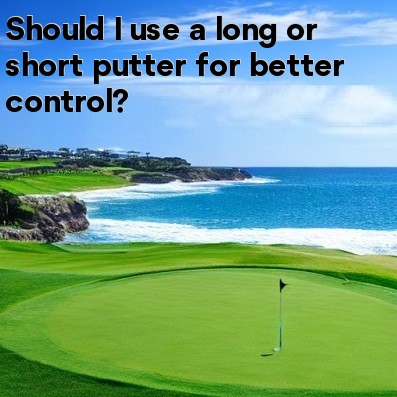
Long Putter versus Short Putter: Which is Better for Better Control in Golf?
When it comes to putting in golf, many players debate whether to use a long putter or a short putter for better control. Both options have their advantages and disadvantages, so it ultimately comes down to personal preference. Let's take a closer look at the two options.
- Long Putter:
The long putter, also known as the belly putter, is designed to be anchored against the body. This type of putter provides additional stability and can help improve control for some players. One of the main benefits of using a long putter is its ability to reduce hand and wrist movements during the putting stroke. By anchoring the putter against the body, players can create a more pendulum-like motion, resulting in a smoother and more consistent stroke.
Furthermore, the added stability of a long putter can be beneficial for players who struggle with nerves or have a shaky hand. The longer length of the putter shaft also promotes a more upright posture, which can help with alignment and maintaining a steady stroke.
However, there are some downsides to using a long putter. Firstly, the anchoring method used with a long putter was banned by the USGA in 2016, although it is still allowed under certain conditions. Secondly, some players may find it challenging to adapt to the longer length of the putter and may struggle with distance control.
- Short Putter:
The short putter is the traditional option that has been used in golf for decades. It typically measures around 32-36 inches in length and is held with both hands in a conventional grip. Using a short putter requires more involvement of the hands and wrists during the stroke, which can provide a greater feel for the distance and control over the ball.
Many top professional players prefer the short putter because it provides a more natural and versatile stroke. With a shorter shaft, players have more flexibility in their grip and can make slight adjustments in their hand position to accommodate different green conditions. Additionally, the shorter length allows for a closer stance to the ball, which can enhance accuracy and precision.
However, using a short putter requires more hand and wrist coordination, which can be a challenge for some players. It also offers less stability compared to a long putter, making it more susceptible to small errors in the stroke.
In conclusion, the choice between a long putter and a short putter for better control in golf ultimately comes down to personal preference. The long putter provides added stability and reduces hand and wrist movements, while the short putter offers a more natural and versatile stroke. It's important to experiment with both options and find the one that feels most comfortable and effective for your game. Ultimately, consistent practice and developing a solid putting technique will outweigh the choice of putter length when it comes to improving control on the greens.





